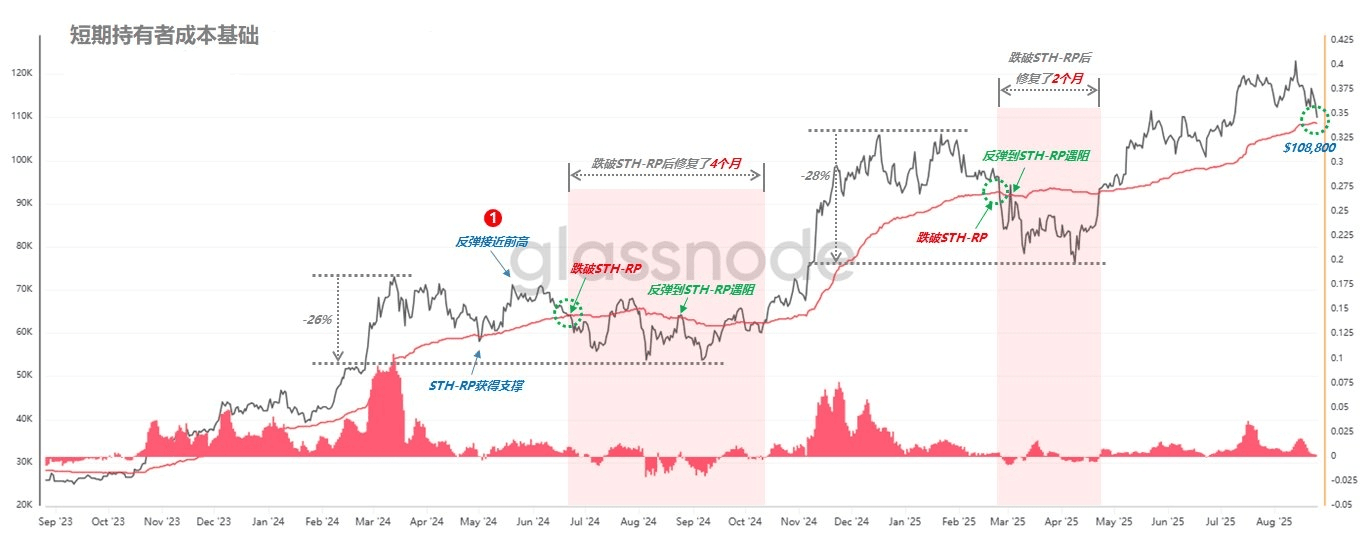In on-chain analysis, the cost basis of short-term holders (STH-RP, red line) is regarded as a key indicator of market sentiment. It represents the average cost of all short-term chips, and once the price falls below this line, it means that the overall short-term holders will shift from profit to loss, significantly impacting market confidence. Therefore, STH-RP is often seen as the 'bull-bear dividing line' in terms of sentiment.
Currently, STH-RP is at $108,800, which is also the lower edge of the key support zone (between $108,000 and $112,000). It is worth noting that on May 4 and June 22, 2025, Bitcoin prices strongly rebounded after touching this line, indicating that players are generally unwilling to sell when at a breakeven point, while also attracting active funding entry.
However, 'cannot fall below' does not equate to 'will not fall below'. Historical experience shows that once STH-RP is breached, the market trend often weakens, and sentiment shifts from anxiety to panic, requiring a longer period for recovery. The two breaches in June 2024 and February 2025 took 4 months and 2 months, respectively, to gradually recover.
From the perspective of price development, the role of STH-RP can be roughly divided into two modes:
1. First touching STH-RP to receive support → Price rebounds to previous highs; if it falls below on the second retest, the trend weakens, with highs continually moving down until the rebound is blocked by STH-RP.
2. First directly falling below STH-RP → Subsequently rebounds to STH-RP and is blocked, then declines again. In this case, the market is more likely to experience rapid declines and panic, but it often shortens the recovery time.
The trend from June to October of 2024 belongs to the first scenario, with a decline of 26%; the period from March to May 2025 corresponds to the second scenario, with a decline of 28%, and both times were compounded by macroeconomic negatives (such as the collapse of the Japanese stock market and escalating trade frictions).
Currently, Bitcoin has retraced about 13% from its peak, and if it falls below $108,800, theoretically there is still a 10-15% downside potential. However, if there are no significant external negatives, the decline may not be too deep.

(Figure 1)
On the trading front, $112,000 and $108,000 are both important contest zones; while absolute effectiveness cannot be guaranteed, they are enough to provoke fierce confrontation. The correct strategy is not to predict the exact bottom, but to formulate a response plan based on individual risk preference:
Friends who have not entered the market can pay attention to the reallocation opportunities if it falls below STH-RP;
Friends who have already entered the market need not panic excessively, as the macro environment and chip structure remain healthy. If STH-RP stabilizes, the probability of a rebound increases, and one could consider averaging down costs or partially reducing positions during an oversold rebound.
Overall, the Bitcoin bull market cycle has not yet ended; although STH-RP serves as a dividing line for sentiment, it does not mean the trend is turning bearish.
